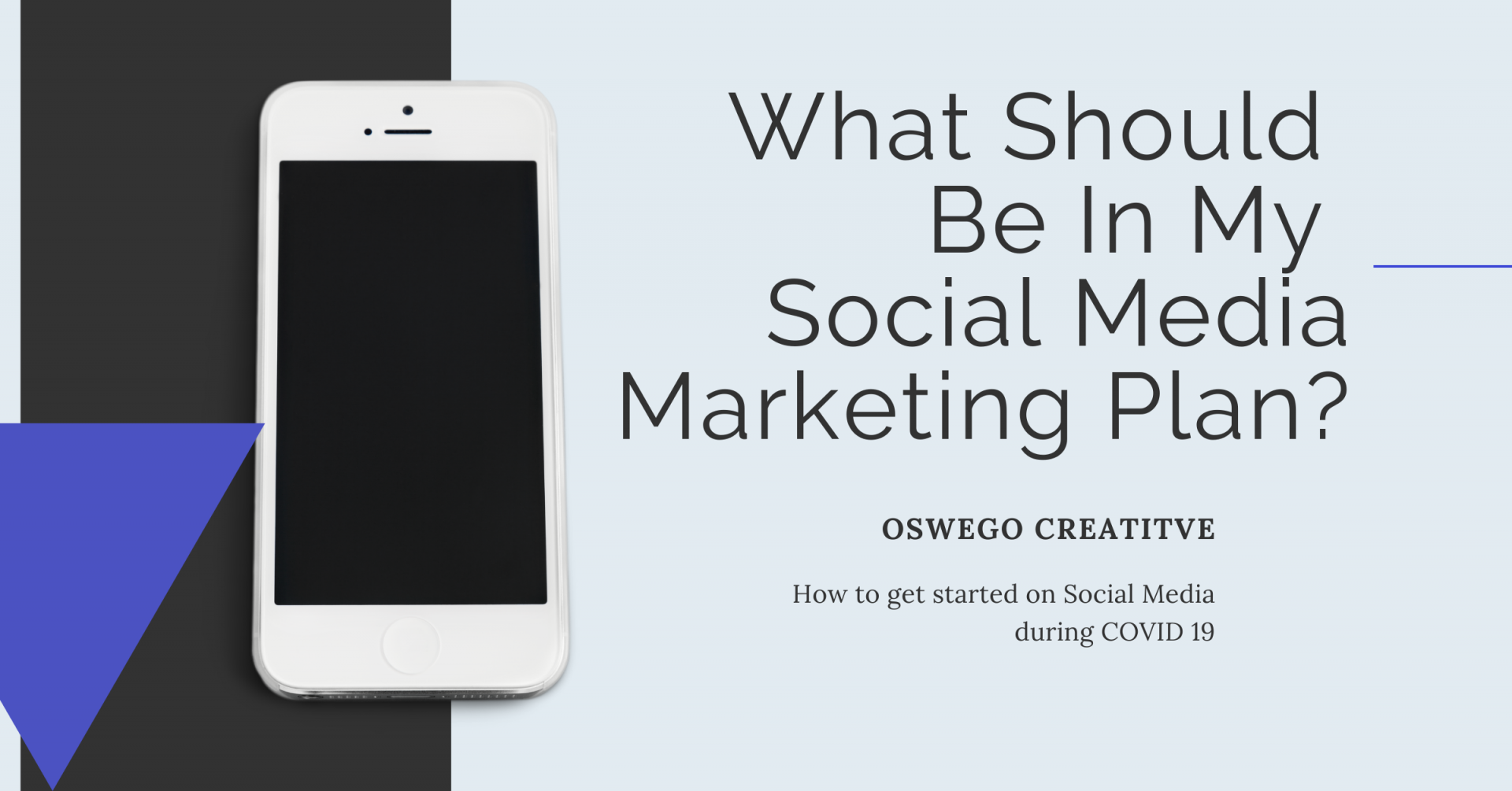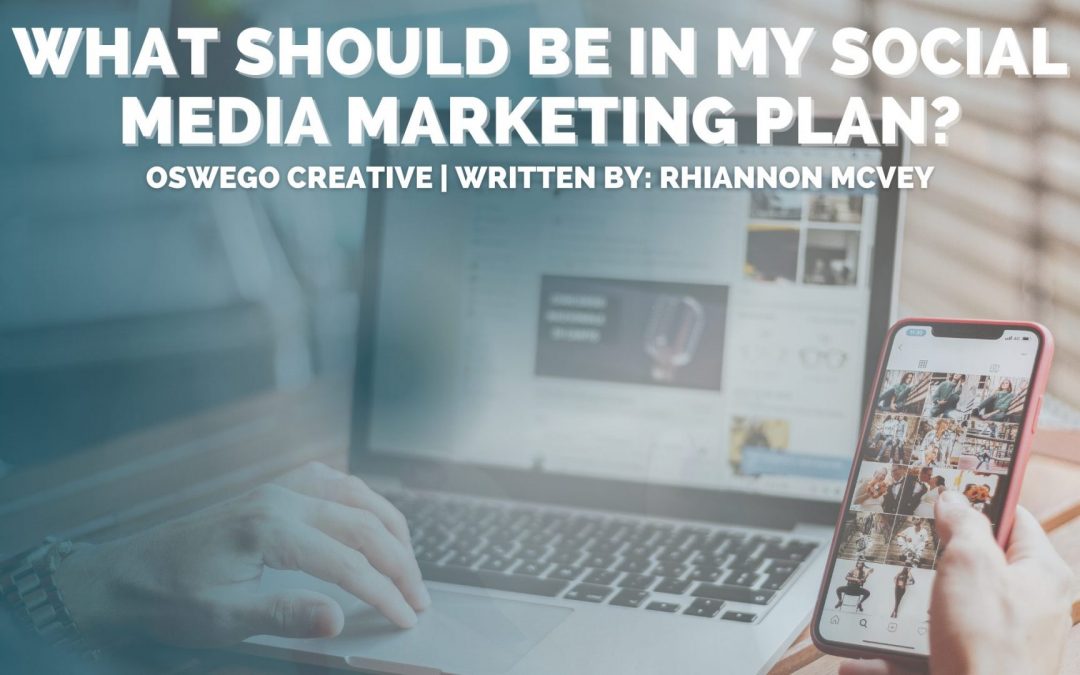When quarantine became the nation’s reality this spring, the purpose of Social Media began to change, and businesses had to pivot quickly to keep up with the unique challenges that COVID 19 placed on individuals and brands alike. I watched businesses temporarily close, begin the journey onto an ecommerce platform, and start to pay attention to the digital world in a way that maybe wasn’t as relevant as before.
As a Digital Media Specialist, a transition like this didn’t feel so jarring, but I’m sure for many businesses, it created a set of challenges that needed to be dealt with, fast.
As we move into month 8 of a global pandemic, the decisions businesses make with regard to in-person work is still a ‘work in progress’. However, from a strictly digital standpoint, this is still the perfect time to create, refine or finalize your Social Marketing Plan, regardless of your businesses size or state of it’s “openness”. Tackling something like this takes time, dedication, and direction, all things that quarantine has gifted us whether we like it or not. If you aren’t sure where to begin, here’s a starting point.

First step, align your goals. What are you trying to accomplish as a business right now, and in the future?
“What goals are you trying to achieve as a brand?”
This question can baffle even the most experienced CEO. It’s difficult trying to take the “big picture” and break it down into tangible goals connected to each part of your brand. When it comes to marketing, it’s important to finalize short term (monthly) goals as well as long term goals (yearly).
This starting point allows your business to become clear on what it’s trying to accomplish with a social media and marketing plan. The next step to tackle involves how you quantify those results.
“How will I know I’ve hit my goal?”
As they saying goes, ‘if you can’t measure it, you can’t manage it’, and this is particularly true for goals that (even if new) are changing monthly, weekly and even daily – as all strong digital marketing strategies should.
We’ve all set a goal like this. “I’m going to eat better.”
“I’m going to start working out more.”
“I want more sales.”
“I want to feel happier.”
Catch my drift? Even though we have the right idea,, its how we know if we’ve hit these milestones that makes all the difference.
When taking a look at the business goals you’re about to set – think along the lines of:
Are they easy to quantify?
Have you determined the tangible steps to get to the end result?
Start by breaking that vague goal down into smaller steps. Take the big picture and start to snip it up into pieces – pieces that are easier to digest and can be delegated to your team. For example, maybe one of your social media goals is to increase your instagram following.
Great. You set a goal. Now, how will you know you’ve accomplished that?
Let’s say your goal is to increase your followers to say 2,000 by x date. Now you have a tangible goal with an end result that you’ll be able to see with your own eyes. Next – figure out how you’ll get to that point through the day-to-day.
A few ways to do that:
Follow 1 new account a day that fits within your target audience
Leave a comment on 5-10 accounts and respond to 2 stories
Determine is paid advertising is an option
Take an Instagram Engagement course
Hire a Virtual Assistant to help with social media account work
Now you’re able to incorporate tasks into your day, or your team’s day, to get closer to the broader goal. Eventually, you’ll need to determine if you need to have a marketing budget to hit those milestones.
“How much money can I put aside for my marketing goals?”
I’ve worked with a mixed bag of brands and budgets, and I stick to one guideline when figuring out budgets – start somewhere. Setting an obscure dollar amount isn’t the key to being successful… You don’t have to spend 10 grand each month – you just need to figure out what takes priority and dedicate dollars towards that.
Even seasoned marketers that understand the in’s and out’s of social media strategy, there are only so many hours in the day and days in a week to accomplish all tasks on the calendar.
Figure out what marketing goal or goals take priority and put your dollars towards meeting that goal.
Whether it’s $50 or $5,000, putting money towards what you value as a brand is key.
“Now that I have my budget, what should my strategy be?”
Now it’s time to finalize a strategy for both organic content, and paid marketing content.
Figuring out when to post, how often to post, and what kind of content to post, will help create clarity for your brand, and generate the consistency needed for your organic posts to thrive. The algorithm loves consistency, so creating a plan that works for you not only helps you stay organized, but puts the algorithm in your favor.
Your paid marketing strategy should be determined by your goals, and your budget. If you can’t work on each marketing goal this month, decide what takes first priority. How will it be executed? Ask yourself “Do I need help doing this, or can I set up campaigns sufficiently?”
“How can I make sure everything gets done?”
The biggest thing that can set you back – trying to do it all in the moment. Unless your full time job is social media management, it’s important to have a schedule that allows you to complete your other tasks while still “looking” like you’re active on social media.
Even as a full-time social media manager, I like to timeblock my content creation and schedule things on Sunday. I recommend starting in small chunks of time.
Plan 3 days worth of content, and give yourself 2 hours before “day 1” to schedule/create that content. Once you’ve mastered that, bump up to planning a week’s worth of content and choose a time to get it all prepared beforehand. Using tools like Canva for graphics, Hootsuite or Sprout Social for scheduling, and utilizing Creator Studio can help make this easier for you.
“How do I make sure everything looks ~clean~?”
You know those big fancy brands that you just love to look at? Or the instagram accounts that seem to blend together perfectly, and you’re just drawn to follow because aesthetically they are so satisfying?
The secret – brand guidelines.
If you’re a newly established brand, you probably have a nicely curated logo to show the world who you are. You probably dropped a pretty penny on it, so why not put it to good use?
When I create logos for clients I always provide a brand specs kit that they can use for other graphics. A brand specs kit includes:
Hex color codes
Font names and format
Complimentary colors
Any imagery inspiration
Having this on hand helps you, and any other staff members, make sure that your social graphics are cohesive across the board.

Remember, your Social Media Strategy doesn’t have to be something to fear. Take each of these steps one at a time, and before you know it, a solid plan will be in place.
If you’re feeling overwhelmed by social media, digital marketing, or advertising in general, reach out to me at rhiannon@oswegocreative.com, and let’s chat about how our Digital Marketing Solutions can help your brand.

Rhiannon Manzi is the Digital Media Specialist for Oswego Creative. You can contact her via email and find her on Instagram.

